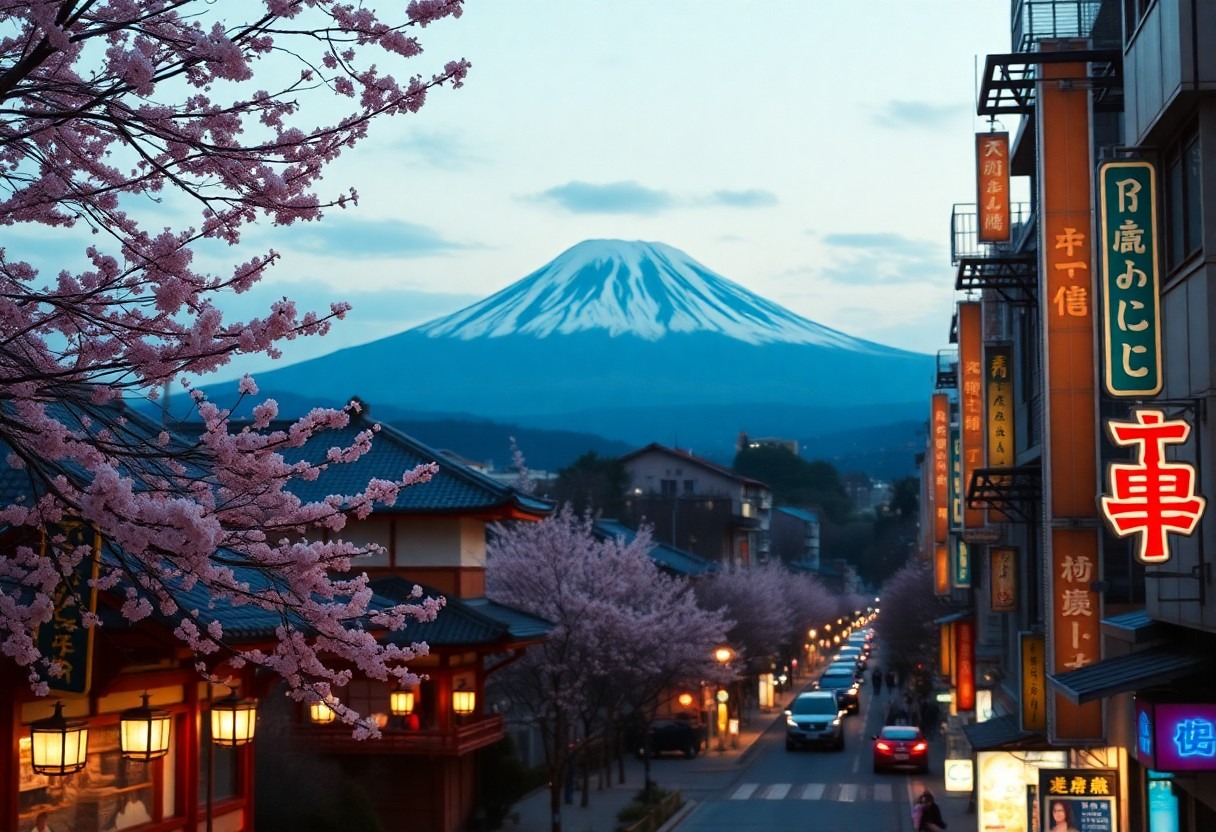Your upcoming journey to Japan promises to be a thrilling adventure, and to truly maximize your travel experience, careful planning is essential. With countless attractions and activities waiting for you, creating the perfect Japan itinerary might feel overwhelming. As you prepare for your trip, remember that your budget and preferred transportation methods play a vital role in enhancing your travel experience in this fascinating country. Whether you choose to rent a car or navigate through Japan’s extensive train system, thorough pre-planning will ensure a seamless and enjoyable adventure. Dive into the vibrant energy of Tokyo, explore the rich culture of Osaka, and discover many other iconic locations. This guide is here to help you craft an unforgettable journey across Japan.
Customize Your Japan Itinerary: Explore Options That Match Your Interests
As you start planning your trip to Japan, you’ll find various itinerary types that cater to your specific interests and the duration of your stay. You might consider a 7-day itinerary that takes you from the bustling streets of Tokyo to the tranquil mountains, or a 10-day itinerary that offers a deeper exploration of the captivating Kansai region and its surroundings. Here are several exciting options to contemplate:
- 7-day itinerary: Ideal for travelers eager to explore the highlights of Tokyo along with the stunning Japanese Alps and relaxing natural hot springs.
- 10-day itinerary: Perfect for those looking to dive into the rich history and culture of the Kansai area, visiting cities like Osaka, Nara, Kyoto, Kobe, and Hiroshima.
The following table provides a concise overview of these two itineraries, showcasing their unique offerings:
| Itinerary | Duration |
|---|---|
| 7-day itinerary | 7 days |
| 10-day itinerary | 10 days |
| Distance covered | 260 mi (7-day), 280 mi (10-day) |
| Highlights | Hot springs, Mount Fuji, snow monkeys (7-day); culinary delights in Osaka, sacred deer, Gion district, Peace Memorial Park (10-day) |
| Suitable for | Urban adventurers, wellness enthusiasts, mountain seekers (7-day); history lovers (10-day) |
By understanding the various types of Japan itineraries available, you empower yourself to plan a journey that aligns perfectly with your personal preferences and interests.
Unlock the Wonders of Japan with a 7-Day Itinerary: From Tokyo to Scenic Mountain Escapes
Some of Japan’s most unforgettable experiences await you in the vibrant Tokyo metropolis and the serene mountain regions. This 7-day itinerary takes you through enchanting destinations such as Hakone, Matsumoto, and Shibu Onsen, allowing you to indulge in rejuvenating hot springs, admire breathtaking landscapes, and fully immerse yourself in authentic Japanese traditions and cultural practices. This itinerary balances cultural exploration and relaxation, ensuring that you not only see the sights but also experience the essence of Japan.
Embark on a Cultural Journey with the 10-Day Itinerary: Explore Kansai and Beyond
This comprehensive 10-day itinerary invites you to explore the rich heritage of the Kansai region and beyond, highlighting vibrant cities like Osaka, Nara, Kyoto, Kobe, and Hiroshima. Perfectly tailored for history enthusiasts and culture seekers, this itinerary offers a unique opportunity to engage with the diverse cultural landscape of these iconic locations.
This enriching 10-day itinerary strikes an excellent balance between urban exploration, historical appreciation, and cultural immersion, giving you the chance to savor delectable local cuisine, visit world-renowned landmarks, and delve into Japan’s deep historical narratives. By choosing to rent a car, you can conveniently travel between destinations while enjoying the stunning vistas of the Japanese countryside. Renting a car is a fantastic way to explore Japan, and with a well-structured itinerary, you can maximize every moment of your adventure.
Essential Strategies for Planning Your Japan Trip Effectively
For any traveler gearing up for a journey to Japan, several critical factors should be considered to enhance the enjoyment of your trip. As you outline your travel plans, take a moment to reflect on your budget, the most suitable mode of transport, and the ideal time of year to visit the country. Here are some foundational tips that can help you get started:
- Customize your itinerary to align with your specific interests and the locations you wish to explore.
- Consider the best mode of transport for your journey, whether it involves car rental, train travel, or flying.
- Choose the optimal time to visit Japan based on your personal preferences and financial considerations.
By acknowledging the importance of careful planning, you can ensure a smooth and delightful trip to Japan.
Your Comprehensive Guide: How to Reach Japan Efficiently
When traveling to Japan, you have the option to arrive through one of the country’s major international airports, such as Tokyo’s Haneda or Narita airports, or Osaka’s Kansai airport. The average cost of a direct flight from London to Tokyo hovers around £918. Utilizing a flight comparison tool like KAYAK can assist you in uncovering the best available deals for your travel dates, ensuring you get the most value for your journey.
Choosing the Ideal Mode of Transport for Your Japan Adventure
If your goal is to explore the diverse landscapes and urban settings of Japan, selecting the most convenient mode of transportation is crucial for your journey. Most itineraries can be navigated using car rentals, train services, air travel, or a combination of these options. Your budget and the number of companions traveling with you are significant factors in determining the most suitable transportation method.
Furthermore, when deciding on the best mode of transport, consider the distance you intend to cover and the time available for your travels. If your itinerary includes multiple cities and rural areas, opting for a car rental can provide the most convenience, allowing you to travel at your own pace and discover hidden gems throughout the countryside. However, if driving isn’t your preference, Japan’s highly efficient and reliable train network serves as an excellent alternative.
Selecting the Best Time for Your Japan Visit
With the wide array of attractions and experiences Japan offers, the ideal time to visit largely depends on your individual preferences and budget. Based on travel trends, October emerges as the most popular month for visiting Japan, followed closely by March and April, which coincide with the stunning Sakura (cherry blossom) season. If you can tolerate higher temperatures and humidity, August could present a great opportunity, as it often comes with lower prices and fewer crowds.
For example, if witnessing the iconic cherry blossoms is on your bucket list, planning your journey during March and April is advisable. However, be prepared for this busy travel period, as accommodation and flight prices may surge. Conversely, if you prefer milder weather and more affordable options, consider visiting during the spring or autumn months.

Step-by-Step Comprehensive Guide for Crafting Your Japan Itinerary
Your dream trip to Japan can become a reality through careful and diligent planning. To assist you, we have compiled a structured, step-by-step guide on how to formulate the ideal itinerary that caters to your preferences.
Below is a detailed breakdown of the essential steps necessary to curate your perfect Japan itinerary:
| Step | Description |
|---|---|
| 1. Assess Your Budget | Determine how much you are willing to spend on your Japan trip, including flights, accommodation, meals, and activities. |
| 2. Select Your Destinations | Identify the locations you want to explore in Japan, such as Tokyo, Osaka, Kyoto, and Hiroshima. |
| 3. Arrange Your Accommodation and Transportation | Secure your lodging, whether it’s hotels, ryokans, or hostels, and organize your transportation arrangements, including trains, flights, or car rentals. |
Step 1: Establish Your Budget for a Memorable Journey
In the process of planning your expedition to Japan, it is crucial to establish your budget. This should encompass not just the costs associated with flights, accommodation, and meals, but also entertainment and activities. Current data indicates that the average rate for a double room in Tokyo is approximately £131 per night, while a rental car in the city typically costs around £66 per day, making it essential to plan your finances accordingly.
Step 2: Identify Your Destinations and Unique Experiences
Your journey to Japan presents numerous incredible locations to discover, including Tokyo, Osaka, Kyoto, and Hiroshima. Selecting your destinations should align with your personal interests, whether they lean towards history, culinary experiences, or natural beauty.
It is essential to consider the distances between your chosen destinations and the travel time required to navigate from one location to another. For example, the distance between Tokyo and Osaka is roughly 280 miles, and the journey typically takes around 5 hours by train or car. Being aware of these details will help you create a more efficient itinerary.
Step 3: Secure Your Accommodation and Transportation
In a methodical manner, move forward to book your accommodation and transportation. Options for lodging range from hotels and ryokans to hostels, and you will also need to arrange your transportation, including trains, flights, or car rentals. It is advisable to reserve your accommodation and transport well in advance to avoid inflated prices and potential availability issues.
Your accommodation options in Japan encompass a spectrum from budget-friendly hostels to luxurious hotels and traditional ryokans. Additionally, consider the option of renting a car to explore Japan’s picturesque countryside and remote areas. With thoughtful planning, your adventure in Japan can result in an unforgettable experience filled with memories that last a lifetime.

Key Considerations for Planning Your Unforgettable Japan Trip
While the thrill of traveling to Japan is undeniable, several essential factors should be evaluated to guarantee a seamless and enjoyable journey. As you plan your trip, it’s crucial to contemplate transportation, budget, and accommodation options. Here are some pivotal factors to keep in mind:
- Mode of transport: Your options include traveling by car, train, or plane, based on your budgetary constraints and personal preferences.
- Budget: Anticipate that your daily expenses will fluctuate according to the type of accommodation, food choices, and activities you select.
- Accommodation: You can opt for hotels, hostels, or ryokans, depending on your financial means and preferences.
Effective preparation and thorough research are the cornerstones of a successful trip, ensuring that every moment spent in Japan is memorable.
Average Budget Breakdown for a Comprehensive Japan Trip
Typically, your financial plan for a Japan trip will hinge on your personal preferences and the current exchange rates. The average cost for a double room in Tokyo is around £131 per night, while a bed in a hostel is priced at approximately £51 per night. If you’re considering a car rental, expect an average daily cost of £66, which should be factored into your overall budget as you plan your travels.
Understanding Road Conditions and Driving in Japan
Japan boasts well-maintained roads, making driving an appealing option for exploring the country. However, it is imperative to familiarize yourself with the left-hand traffic system and obtain an International Driving Permit to operate a vehicle legally.
Understanding road conditions and driving regulations in Japan is essential for a safe and enjoyable experience. For comprehensive information about driving in Japan, you can refer to the Japanese Automobile Federation website. Additionally, be aware of the cost of tolls, which can be significant, as well as the type of vehicle you choose to rent, as this may influence your fuel expenses throughout your journey.
Weather Patterns and Climate Variability in Japan
Despite meticulous planning, weather conditions in Japan can be unpredictable. The country experiences a temperate climate characterized by four distinct seasons, with weather variations that depend significantly on the region.
Japan’s climate ranges from subtropical in the southern parts to temperate in the northern regions. For optimal travel experiences, consider visiting Japan during the spring or autumn months when the weather is typically mild and pleasant. However, if you seek a unique experience, contemplate planning your visit during the cherry blossom season in March and April, or during the winter season for skiing and relaxation in hot springs.
Analyzing the Advantages and Disadvantages of Various Transportation Options in Japan
As you strategize your trip to Japan, it is crucial to evaluate the advantages and disadvantages associated with different modes of transportation. The table below outlines the primary pros and cons of each option:
| Transportation Mode | Pros and Cons |
|---|---|
| Train | Convenient, efficient, and features an extensive network, though it can be costly |
| Car Rental | Offers flexibility and the freedom to explore; however, it requires an International Driving Permit and can be expensive |
| Flight | Quick and convenient for long distances, but can be pricey and has limited route options |
| Bus | Cost-effective and connects many routes, yet can be less convenient and time-consuming |
| Subway | Efficient and convenient for urban travel, but may be crowded and confusing for newcomers |
As evident, each transportation mode presents unique advantages and disadvantages. It is essential to consider your budget, preferred travel style, and intended destinations when determining which transportation option best suits your needs.
Evaluating the Benefits and Drawbacks of Renting a Car in Japan
Renting a car in Japan can be an excellent way to explore the country, but it is crucial to weigh the benefits and drawbacks. The table below summarizes the key advantages and disadvantages:
| Advantages | Disadvantages |
|---|---|
| Provides flexibility and freedom to explore | Requires an International Driving Permit |
| Can be cost-effective for groups or long road trips | May be costly for solo travelers or short distances |
| Facilitates scenic routes and rural exploration | Potentially requires additional insurance and incurs toll fees |
Assessing the Pros and Cons of Utilizing the Japan Rail Pass
| Advantages | Disadvantages |
|---|---|
| Convenient and efficient travel option | Can be costly, particularly for short trips |
| Covers a wide range of routes and train options | May not be economical for solo travelers or limited travel |
| Enables scenic routes and rural exploration | Requires thorough planning and research to maximize benefits |
The Japan Rail Pass can be a cost-effective choice for travelers intending to cover extensive distances or visit multiple cities. However, it is essential to calculate the costs and compare them against individual train ticket prices to ensure you secure the best value. Additionally, while the Japan Rail Pass offers convenience and efficiency, it is crucial to plan ahead and research the various routes and trains included in the pass to optimize your experience.
Understanding the Pros and Cons of Air Travel in Japan
When considering air travel, it is beneficial to weigh the advantages and disadvantages while also exploring alternative transportation methods.
In summary, every transportation mode in Japan has its unique advantages and disadvantages. By evaluating your budget, travel preferences, and destinations, you can select the most suitable option for your adventure and enhance your time in Japan. Always remember to conduct thorough research and plan ahead to ensure a smooth and enjoyable trip.

Detailed Itinerary for 7-Day and 10-Day Japanese Excursions
To optimize your travel experience in Japan, having a well-structured itinerary is essential. Below is an overview of what you can expect during both 7-day and 10-day adventures.
7-Day Itinerary: Comprehensive Day-by-Day Exploration
During your 7-day journey, you will navigate through the vibrant cities of Tokyo, Hakone, Matsumoto, and Shibu Onsen. Expect to indulge in rejuvenating hot springs, witness the grandeur of Mount Fuji, and embrace the stunning landscapes of the Japanese Alps. Each day will be filled with unique experiences, creating lasting memories as you explore the beauty and culture of Japan.
10-Day Itinerary: Extensive Day-by-Day Experience
To fully immerse yourself in the Kansai region, your 10-day itinerary will encompass captivating explorations of Osaka, Nara, Kyoto, Kobe, and Hiroshima. Savor the culinary delights of Osaka, interact with the sacred deer in Nara, and explore the renowned Gion district in Kyoto.
This extensive 10-day itinerary allows you to uncover the rich tapestry of history and culture that defines the region, including a visit to the significant Peace Memorial Park in Hiroshima. By securing a rental car, you’ll have the flexibility to explore at your leisure, but it’s essential to verify road conditions and traffic regulations before embarking on your journey. The estimated budget for this trip is approximately £885 per person, based on double occupancy, covering up to 300 miles. Don’t overlook the opportunity to rent a car and consider acquiring a Japan Rail Pass for added convenience. This itinerary promises an enriching experience through Japan’s hot springs, traditional inns, and unforgettable memories.
Your Adventure Awaits: Begin Planning Your Japan Journey
With the insights provided, you are now equipped to effectively plan your Japan itinerary. You understand the optimal modes of transport, the best times to visit, and how to budget for your journey. Renting a car can significantly enhance your exploration of Japan, but be sure to account for fuel and toll costs. With this comprehensive guide in hand, you are well-prepared to initiate the planning process for your upcoming adventure in Japan.
Frequently Asked Questions About Traveling in Japan
What is the best way for first-time travelers to navigate Japan?
The most effective way for a first-time traveler to navigate Japan largely depends on their budget and the destinations they wish to explore. Options include traveling by car, train, or airplane, or a combination of these modes. For those considering a road trip, renting a car is a viable choice, though an International Driving Permit is necessary. The Japan Rail Pass is also an excellent option for train travel, offering convenience and flexibility.
When is the optimal time for a first-time traveler to visit Japan?
October is widely regarded as the most favorable month for visiting Japan,

